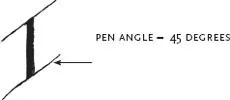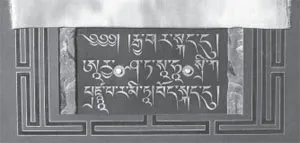
eBook - ePub
Tibetan Calligraphy
How to Write the Alphabet and More
Sanje Elliott
This is a test
Partager le livre
- 104 pages
- English
- ePUB (adapté aux mobiles)
- Disponible sur iOS et Android
eBook - ePub
Tibetan Calligraphy
How to Write the Alphabet and More
Sanje Elliott
Détails du livre
Aperçu du livre
Table des matières
Citations
À propos de ce livre
In Tibetan Calligraphy, Sanje Elliott shows us how to capture the elegance and grace of Tibetan calligraphy without prior knowledge of either Tibetan language or calligraphy. This beautiful book includes many prayers, mantras, and seed syllables to copy and study. Perfect for practitioners, artists, and anyone interested in the Tibetan language.
Foire aux questions
Comment puis-je résilier mon abonnement ?
Il vous suffit de vous rendre dans la section compte dans paramètres et de cliquer sur « Résilier l’abonnement ». C’est aussi simple que cela ! Une fois que vous aurez résilié votre abonnement, il restera actif pour le reste de la période pour laquelle vous avez payé. Découvrez-en plus ici.
Puis-je / comment puis-je télécharger des livres ?
Pour le moment, tous nos livres en format ePub adaptés aux mobiles peuvent être téléchargés via l’application. La plupart de nos PDF sont également disponibles en téléchargement et les autres seront téléchargeables très prochainement. Découvrez-en plus ici.
Quelle est la différence entre les formules tarifaires ?
Les deux abonnements vous donnent un accès complet à la bibliothèque et à toutes les fonctionnalités de Perlego. Les seules différences sont les tarifs ainsi que la période d’abonnement : avec l’abonnement annuel, vous économiserez environ 30 % par rapport à 12 mois d’abonnement mensuel.
Qu’est-ce que Perlego ?
Nous sommes un service d’abonnement à des ouvrages universitaires en ligne, où vous pouvez accéder à toute une bibliothèque pour un prix inférieur à celui d’un seul livre par mois. Avec plus d’un million de livres sur plus de 1 000 sujets, nous avons ce qu’il vous faut ! Découvrez-en plus ici.
Prenez-vous en charge la synthèse vocale ?
Recherchez le symbole Écouter sur votre prochain livre pour voir si vous pouvez l’écouter. L’outil Écouter lit le texte à haute voix pour vous, en surlignant le passage qui est en cours de lecture. Vous pouvez le mettre sur pause, l’accélérer ou le ralentir. Découvrez-en plus ici.
Est-ce que Tibetan Calligraphy est un PDF/ePUB en ligne ?
Oui, vous pouvez accéder à Tibetan Calligraphy par Sanje Elliott en format PDF et/ou ePUB ainsi qu’à d’autres livres populaires dans Art et Techniques d'art. Nous disposons de plus d’un million d’ouvrages à découvrir dans notre catalogue.
Informations
Sujet
ArtSous-sujet
Techniques d'art1. GETTING STARTED

Gather your materials from the list provided below. I recommend that you start with real ink and pens right from the beginning. Perhaps later you can work with flat-edge felt-tipped pens or other writing tools, but sometimes these are too easy to help with deeply learning the forms; we need to feel the liquid ink on the paper.
After you have gathered your materials, find a quiet place to practice.
Make friends with your pen.
Please don’t forget to breathe; first inhale and then, as you exhale, feel the ink flowing out the pen onto the paper. This is very important, because if you hold your breath and tense your body, you will not achieve a good result.
Practice all the introductory pen strokes on pages 11–14, giving special effort to the ones that require a twist, or rotation, of the pen in your fingers. Practice first the vertical twist and then the horizontal twist. The accompanying photos on those pages should help you to see how the pen is manipulated for these strokes. When you have become successful with the introductory strokes, start the alphabet and practice each letter until you have achieved a good facsimile of the model in the book.
Spend some time every day practicing. Don’t just dip in every two weeks or so. You need to practice regularly and for some time to develop ease and confidence in your letters.
After you have completed the alphabet and also mastered the stacked letters, you may want to try some of the mantras in the back of this book. It is very important to do the exercises in this book in the proper order; leaping ahead will only cause frustration, confusion, and obstacles.
CONTEMPLATIVE PRACTICE
Along with meditation, mantra chanting, and thangka painting, practicing Tibetan calligraphy can be considered a contemplative Dharma practice. When it is viewed in this way, it is very good to open the practice session with the refuge and bodhichitta prayers, then, at the end of the practice, you can dedicate the merit to all beings, so that the virtue of the practice will be shared by all. If your teacher has given you a particular form of the dedication prayer you can use that, or you can use the one on page 73.
Practicing like this, mindfully and keeping aware of the breath as one writes the letters, can be a source of inspiration to the student of calligraphy and can create some benefit for oneself and also for others.
MATERIALS
► pen holder (the wooden handle into which you insert the nib and which you grip while drawing or writing)
► pen nibs: Tape or Brause 2 ½ mm nib with reservoir, or Speedball C-2
► ink: Higgins Eternal (this is really the best choice for beginners as it is easy to wash out!)
► eye dropper to load ink into pen reservoir
► paper: pad of 11′ × 17′ gridded paper, 8 grids per inch
► fountain pen: Schaeffer’s calligraphy fountain pen, medium nib
Optional Materials
► slanted easel (to allow writing at a better angle for better vision and straighter back)
► T square (if you’re writing on nongridded paper, you can use this to create lines on the paper)
► drawing pencil, #2H is preferable
► vermillion Japanese liquid ink or your choice of gouache (opaque watercolor)
► larger nibs: Hiro #10 or #15
If your local art shop does not have the above items, most of them can be easily ordered online.
GLOSSARY OF IMPORTANT TERMS
Lantsa
The decorative letters derived from the Sanskrit ranjana script in the eleventh century. It is used in jewelry, sculpture, prayer wheels, and temple decorations. While we won’t be learning lantsa in this book, it nonetheless is a beautiful alphabet worth exploring.

OM MANI PADME HUM mantra in lantsa carved in wood.
Pen Angle
The pen angle is the angle at which the pen is addressed to the paper; for our purposes, it should be forty-five degrees. Many alphabets, including the roman letters, are written with a forty-five or near-forty-five-degree angle. This is made possible by the use of a flat-edged pen, or a reed or bamboo pen such as those used by Tibetans. The benefit of writing at such a pen slant is the inherent beauty of the contrasting thick and thin elements of the characters, giving it a distinctive, calligraphic look.

Pen Scale
The ratio of the height of the letter to the width of the pen nib. For example the uchen alphabet letters are seven pen widths high, assuming you are using the nibs mentioned in the section on materials. Some letter combinations may become taller than seven pen widths, especially when letters are stacked on top of each other, or combined with vowel markers.

Twist
The pen stroke used to create a properly tapering vertical stroke: thick at the top and diminishing to a hairline at the bottom. This is done by twisting or rotating the pen counterclockwise as it is moving down the page. To learn to do this, practice rolling the pen counterclockwise between the thumb and the middle finger. Notice how the thumb moves down toward the nib as the pen rotates and the tip of the pen is rotated to its vertical edge.
Uchen
The uchen script is the most prevalent form of Tibetan script, as it is the standard for printing. Its earliest use was in the transcribing of Buddhist scriptures from Sanskrit into Tibetan. The word literally means “with a head.” It is comparable to the serif faces of roman type used for printing in the West and is the subject of this book.

Prajnaparamita text written in uchen.
Umé
Umé is a sort of sans-serif Tibetan script that has evolved many forms over time, from very formal and elegant scripts to Tibetan shorthand. It literally means “headless” because it does not include the header line employed by the uchen script; it also uses vertical lines rather than dots to separate sy...